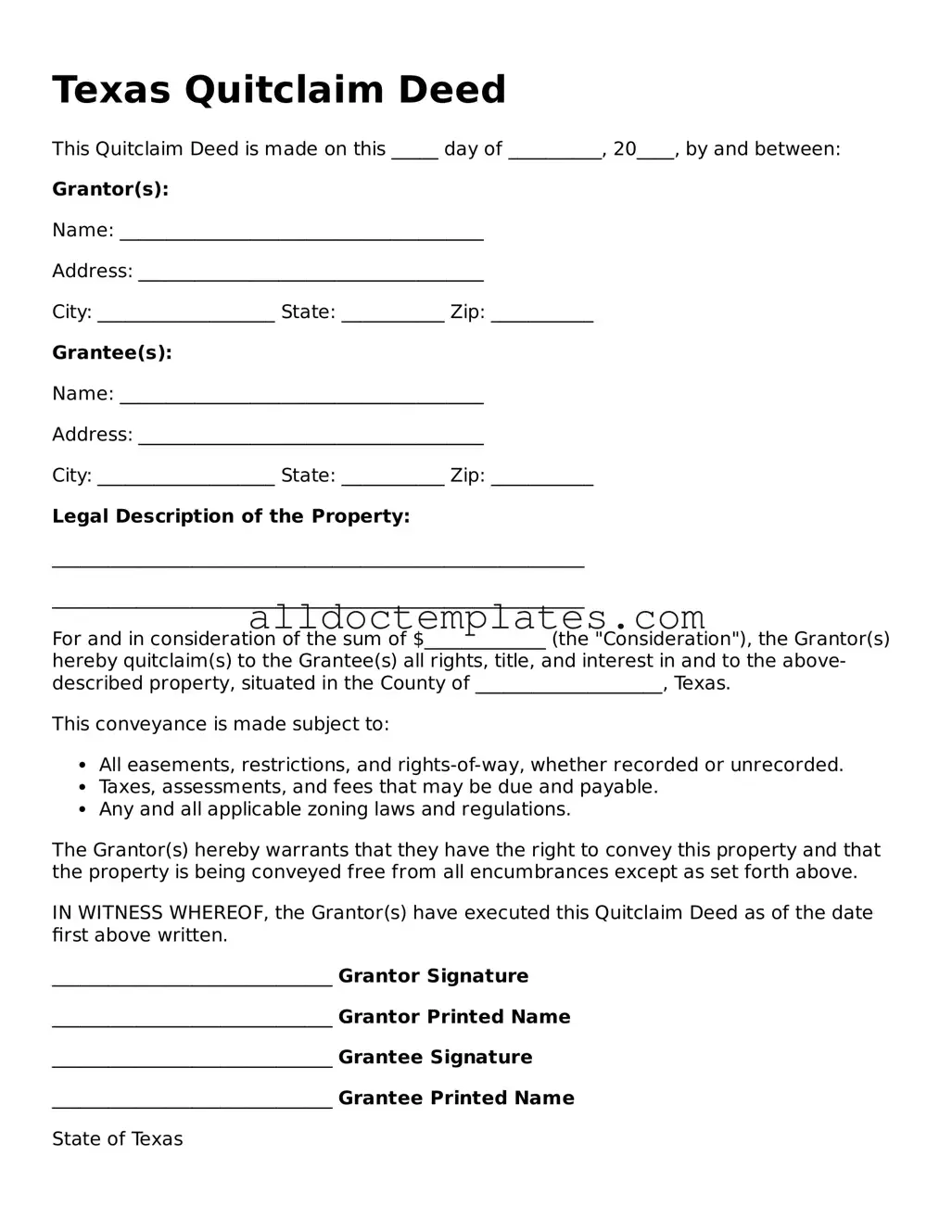Texas Quitclaim Deed
This Quitclaim Deed is made on this _____ day of __________, 20____, by and between:
Grantor(s):
Name: _______________________________________
Address: _____________________________________
City: ___________________ State: ___________ Zip: ___________
Grantee(s):
Name: _______________________________________
Address: _____________________________________
City: ___________________ State: ___________ Zip: ___________
Legal Description of the Property:
_________________________________________________________
_________________________________________________________
For and in consideration of the sum of $_____________ (the "Consideration"), the Grantor(s) hereby quitclaim(s) to the Grantee(s) all rights, title, and interest in and to the above-described property, situated in the County of ____________________, Texas.
This conveyance is made subject to:
- All easements, restrictions, and rights-of-way, whether recorded or unrecorded.
- Taxes, assessments, and fees that may be due and payable.
- Any and all applicable zoning laws and regulations.
The Grantor(s) hereby warrants that they have the right to convey this property and that the property is being conveyed free from all encumbrances except as set forth above.
IN WITNESS WHEREOF, the Grantor(s) have executed this Quitclaim Deed as of the date first above written.
______________________________ Grantor Signature
______________________________ Grantor Printed Name
______________________________ Grantee Signature
______________________________ Grantee Printed Name
State of Texas
County of ____________________
Before me, a Notary Public in and for said County and State, on this _____ day of __________, 20____, personally appeared ________________________________, known to me (or proved to me on the oath of ________________________) to be the person(s) whose name(s) is/are subscribed to the foregoing instrument, and acknowledged to me that he/she/they executed the same for the purposes and consideration therein expressed.
Given under my hand and seal of office this _____ day of __________, 20____.
______________________________
Notary Public, State of Texas
My commission expires: ____________
